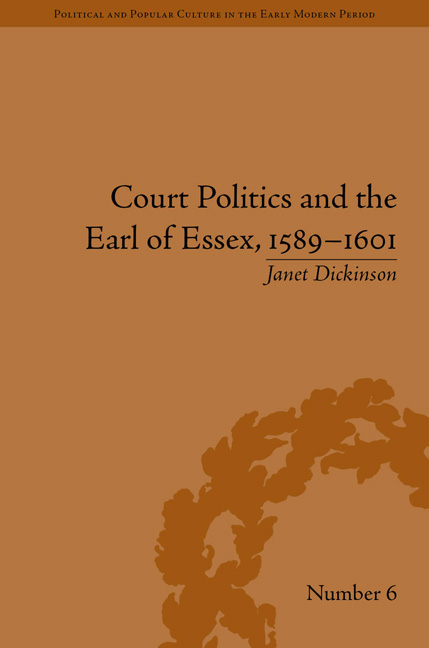Book contents
- Frontmatter
- CONTENTS
- Dedication
- Acknowledgements
- Introduction
- 1 Chivalric Culture and the Earl of Essex
- 2 The Virgin Queen and Her Lovers
- 3 ‘This Late Unhappy Accident’: The Rebellion of 1601
- 4 Faction in the 1590s?
- 5 Essex and Cecil
- 6 Essex and the Essexians
- 7 Elizabeth's Last Decade: Cult or Crisis?
- Notes
- Bibliography
- Index
Introduction
- Frontmatter
- CONTENTS
- Dedication
- Acknowledgements
- Introduction
- 1 Chivalric Culture and the Earl of Essex
- 2 The Virgin Queen and Her Lovers
- 3 ‘This Late Unhappy Accident’: The Rebellion of 1601
- 4 Faction in the 1590s?
- 5 Essex and Cecil
- 6 Essex and the Essexians
- 7 Elizabeth's Last Decade: Cult or Crisis?
- Notes
- Bibliography
- Index
Summary
All I thinke presente shedding abundante teares and casting out lowd sobs and wofull cries. In uttering the peticon of the forgiuenes of sinnes he spake with great fervency forgiue us our trespases in Christ Jesus … layinge his neck on the blocke and his armes abroad he patiently received the stroke of the Executioner.
In 2001, a recently rediscovered account of the execution of Robert Devereux, 2nd Earl of Essex was published by BBC History Magazine, with the front-page headline: ‘He Loved a Queen. He Lost His Head’. The headline and the article testify to the enduring interest in the life of a Tudor traitor who enjoyed a decade-long career of dazzling success at the court of Elizabeth I during the post-Armada years before a sudden fall from favour with the Queen, a dramatic rebellion on the streets of London and finally his execution in the Tower of London on 25 February 1601.
Born on 10 November 1565, Essex was the son of Walter Devereux, 1st Earl of Essex and Lettice Knollys, great-niece of Anne Boleyn. Walter's determination to advance the family fortunes led him to commit himself to the colonization of Ulster in 1573, financing his efforts through a loan from the Queen, based on the forfeiture of about a third of his property.
- Type
- Chapter
- Information
- Court Politics and the Earl of Essex, 1589–1601 , pp. 1 - 4Publisher: Pickering & ChattoFirst published in: 2014

